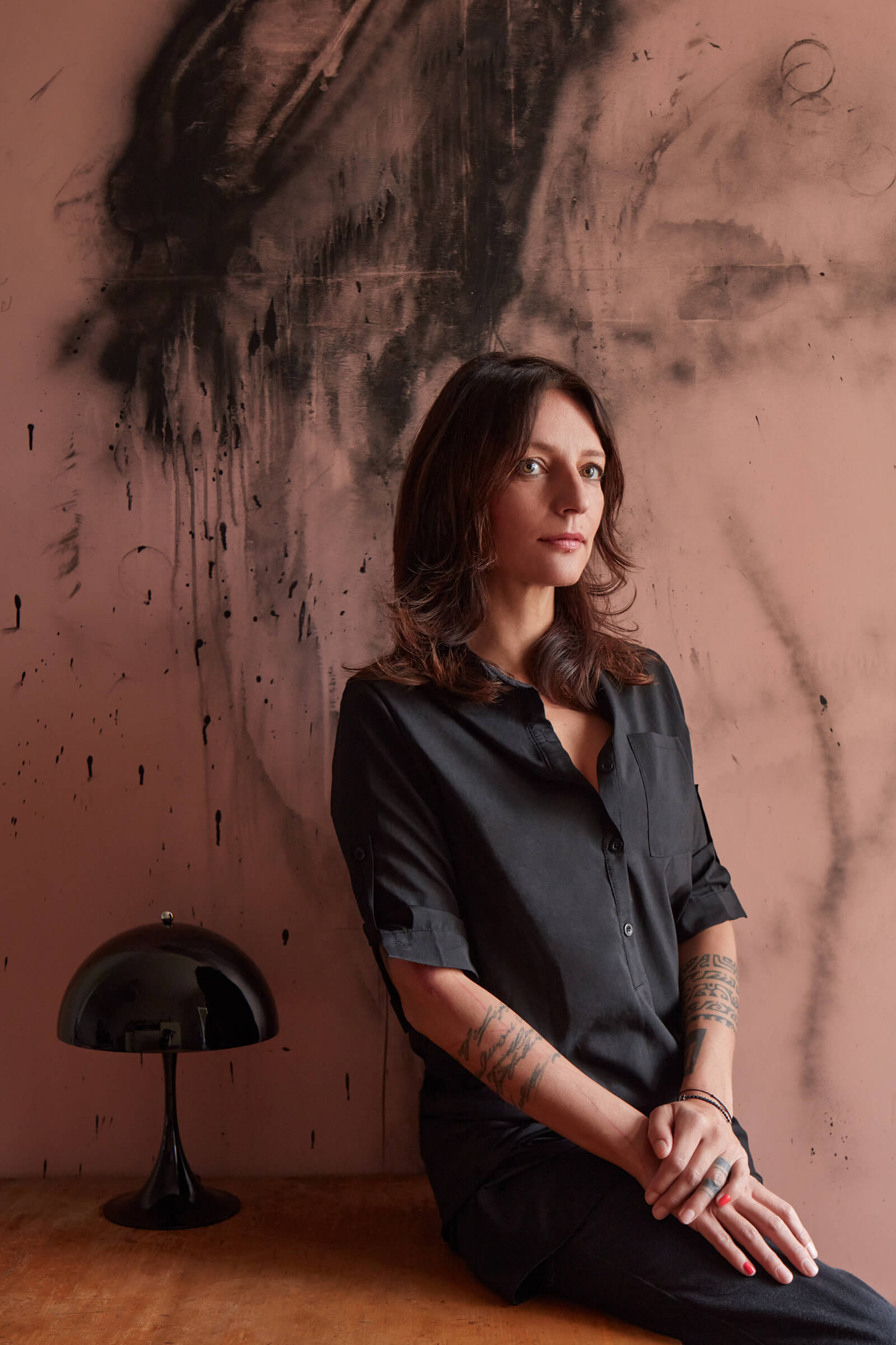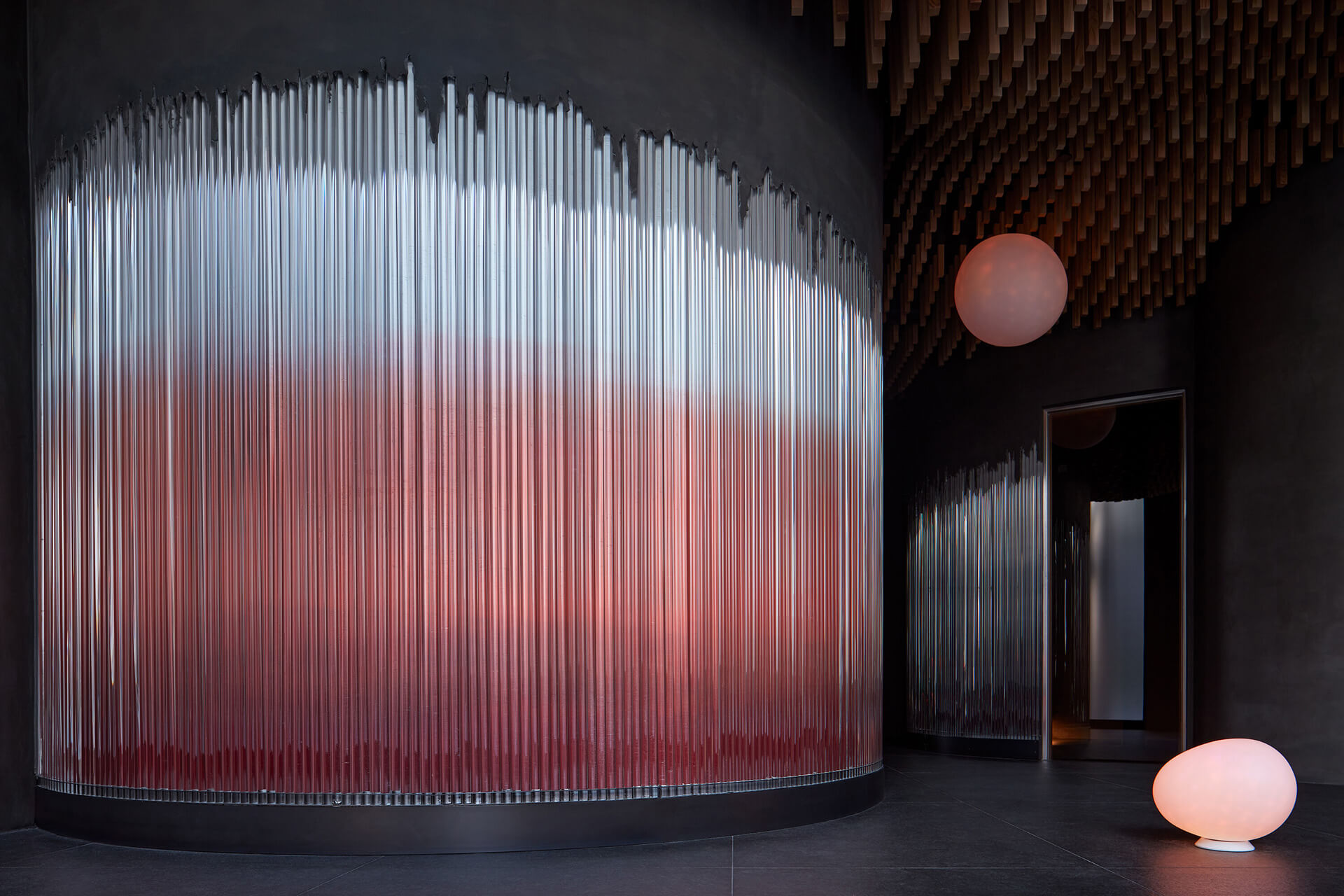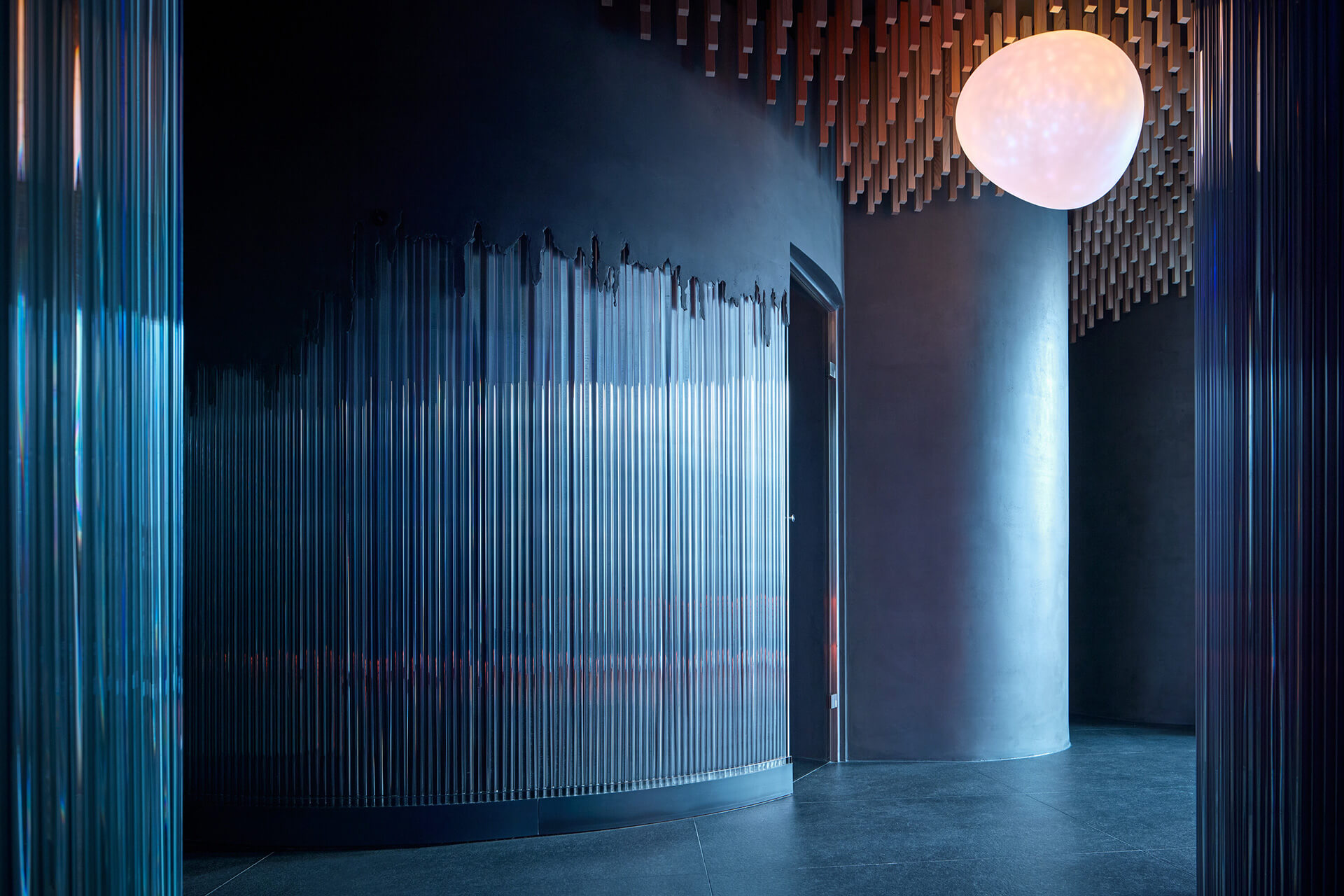At first glimpse, this industrial space looks like a stylish eatery or a bar. Upon closer inspection, one realises that it’s a distinctively positioned wellness centre. One of the first things that catches the eye is the space’s gently undulating walls, lined with a collage of vertical transparent glass rods. Design firm Formafatal has conceptualised the interiors of a unique holistic wellness centre in Prague, Czech Republic. This distinctive space is intended for the Institute of Natural Medicine, Cellularium, a part of the entrance floor of the new building—Main Point Pankrác (MPP). Here, a carefully considered play of materials and textures creates a grounded space for the wellness centre’s varied treatments.

Conducting state-of-the-art healing practices in a cutting-edge space, the centre is perfect for patrons who wish to be encompassed by an aesthetically treated space, heightened by calming hues and unique silhouettes. The primary section of this holistic wellness centre, known as SPA, measures approximately 1,600 square feet and features separate changing rooms along with accompanying spaces for three treatment procedures—a Finnish sauna, a cryosauna, and an airflow therapy space.

After booking with the Institute of Natural Medicine, Cellularium, guests can expect to be nurtured, healed, and supported while enjoying a serene setting. Visitors are welcomed into this immersive, mood-boosting space through a reception area, representative of the design language of the centre. The industrial design aesthetic—which punctuates the entire space—conjures an air of relaxed luxury.

A separate circular cell, the doctor’s office, is inserted into the entrance foyer, which also serves as a waiting room. While the reception and doctor’s office have a neutral colour palette, the rest of the wellness centre exhibits dark, intriguing hues. The doctor’s office is a minimal space with open, metal mesh shelves and sleek furnishings. Load-bearing, sloping concrete columns serve as a fun design element in the space. The SPA area is characterised by dark tones and smooth screed on surfaces, together with plenty of sunlight. The design studio crafts the nurse’s and the doctor’s offices in soft light shades so as to not distract the visitor.

The main difficulty for Formafatal was that the space did not feature any flat walls, and was vertically interwoven with inclined load-bearing columns. “This was not an easy task for designing the interiors and furniture, which is completely made according to custom design. In the course of the design, we emphasised the soft form of the walls with simple yet creative claddings. The outer wall of the doctor’s office is covered by vertically divided steel sheets, which are transformed into a smooth surface with built-in doors. The vertical division reflects on the exterior façade of the MPP building. This organising principle continues in the SPA area—all three main rooms are covered with transparent glass rods. The shades of the gradient also foreshadow the different functions of the space—red is the symbol of the sauna (fire), blue is the symbol of the cryosauna (ice), and grey is the symbol of the air therapy (wind),” says Dagmar Štěpánová, lead designer and founder of Formafatal.

The Prague-based creative firm focused on architecture, interior design, exhibition installations and product design approaches all its projects individually and with a focus on the client’s specific requirements. “The interiors of the Institute of Natural Medicine, Cellularium, were clearly defined by the client. Nevertheless, we had space for creativity, but we also worked with a limited budget. The original idea was to use custom glass bars, where the glass would be coloured into the gradient. However, it could not be realised due to the budget constraints. But I did not want to give up on this idea, so we came up with an alternative that the wall would be painted in a gradient and in front of the wall we set up a mass-produced clear glass rod. The result is certainly not the same, but it is very similar to the initial idea,” concludes Štěpánová.


